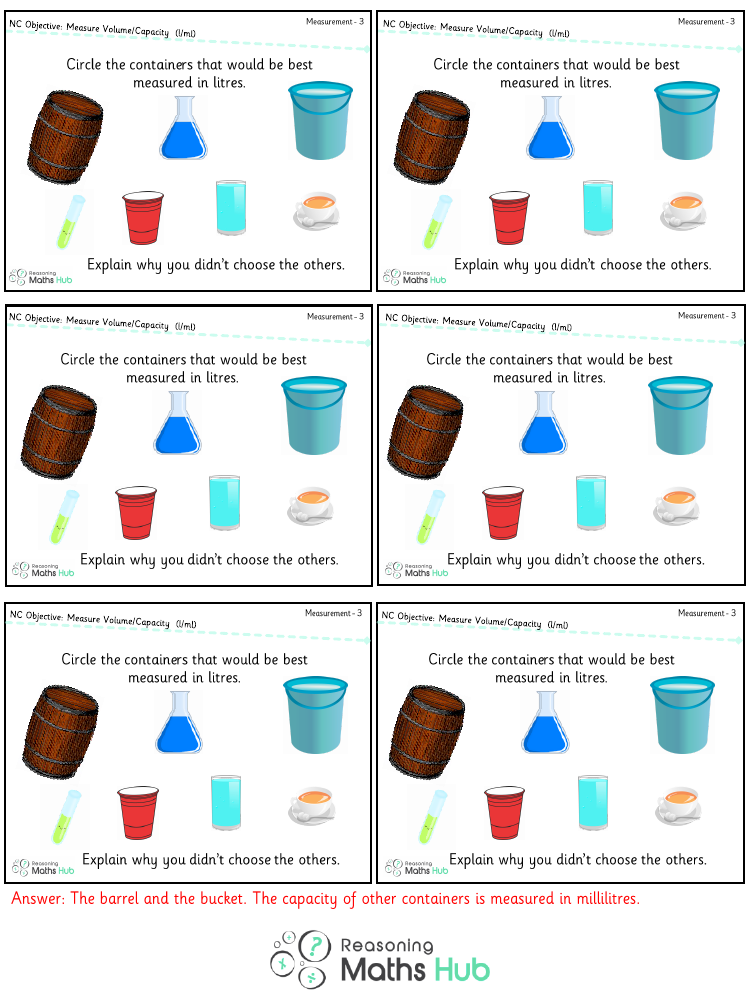Measure volume and capacity 5 - Reasoning

Maths Resource Description
When delving into the concepts of volume and capacity, reasoning plays a crucial role in understanding the relationship between the two. Volume refers to the amount of space that an object occupies, which is often measured in cubic units, while capacity is the amount of liquid a container can hold, typically measured in litres or millilitres. In a lesson focused on 'Measure volume and capacity 5 - Reasoning', students would be encouraged to apply logical thinking and problem-solving skills to tackle questions and real-world scenarios involving these measurements.
Such a lesson would likely involve a variety of activities designed to challenge students' comprehension of volume and capacity. They might compare different containers to reason which has the greater capacity, or calculate the volume of objects using given formulas. The reasoning aspect would prompt students to explain their thinking, justify their answers, and understand the practical applications of these measurements. For instance, they may be asked to determine how many times a smaller container can be filled with the contents of a larger one, or to reason about the best container to use for a given purpose based on its volume and capacity. This approach not only reinforces mathematical concepts but also develops critical thinking skills that are essential for understanding the physical properties of space and matter.